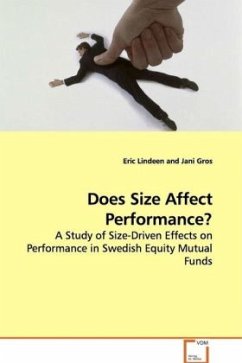The impact of size on the returns of mutual funds
has long been the subject of interest in academic
circles, however scholars have to date not managed
to reach any consensus as to what the relationship
looks like. This paper takes the question of size to
a new level by analyzing if size is an important
driver of performance due to its affect on factors
that are driving performance. We find that size as a
factor captures many and often opposing effects of
factors that drive performance differently depending
on a fund s size and evidence stemming from other
research misses to capture this complex
relationship. As much as size-driven factors such as
liquidity costs, economies of scale and extreme net
flows are affected by the size of a fund, they are
also likely to vary with the characteristics of
different markets and over time. We present the idea
that, given the correct analytical model, it would
be possible to derive the perfect fund size for a
specific market. Knowing how size affects the
performance of a fund is imperative for both
investors and fund managers seeking to maximize
returns.
has long been the subject of interest in academic
circles, however scholars have to date not managed
to reach any consensus as to what the relationship
looks like. This paper takes the question of size to
a new level by analyzing if size is an important
driver of performance due to its affect on factors
that are driving performance. We find that size as a
factor captures many and often opposing effects of
factors that drive performance differently depending
on a fund s size and evidence stemming from other
research misses to capture this complex
relationship. As much as size-driven factors such as
liquidity costs, economies of scale and extreme net
flows are affected by the size of a fund, they are
also likely to vary with the characteristics of
different markets and over time. We present the idea
that, given the correct analytical model, it would
be possible to derive the perfect fund size for a
specific market. Knowing how size affects the
performance of a fund is imperative for both
investors and fund managers seeking to maximize
returns.








